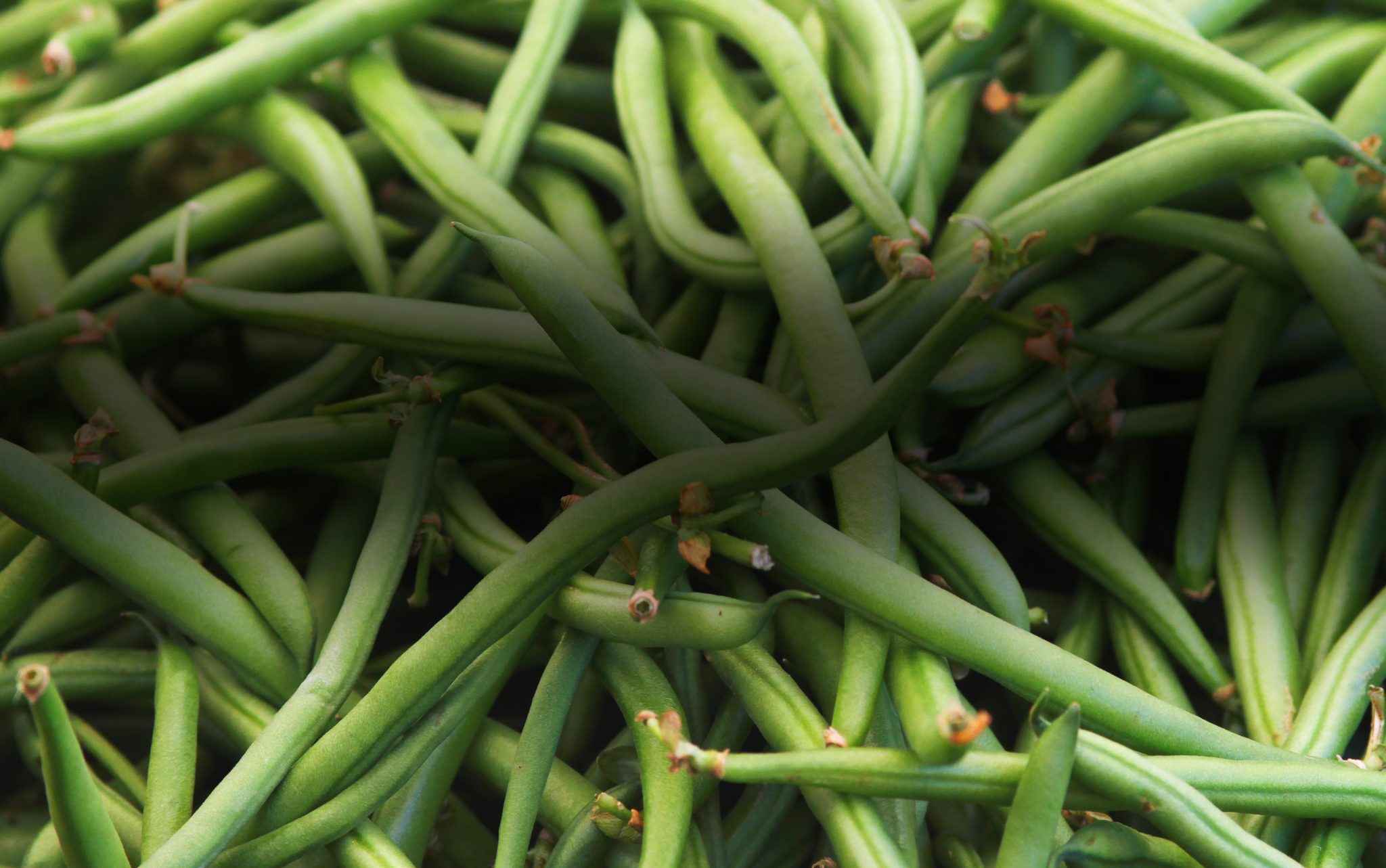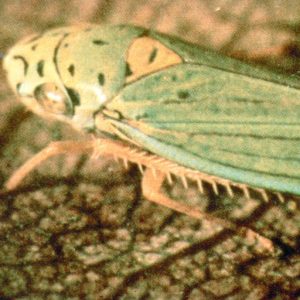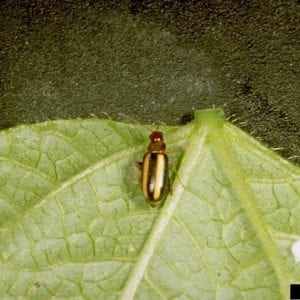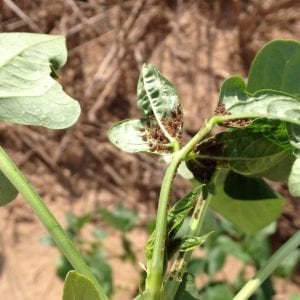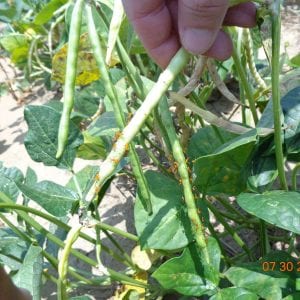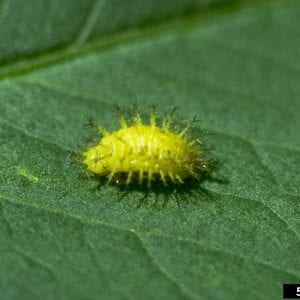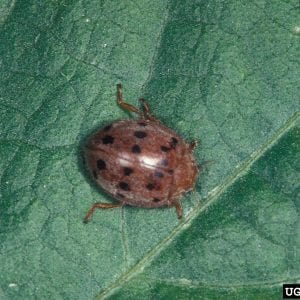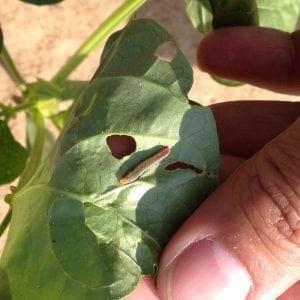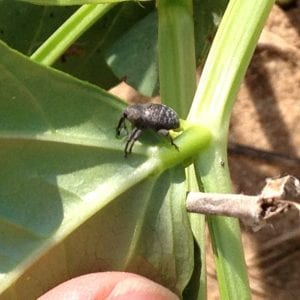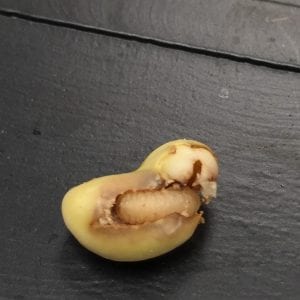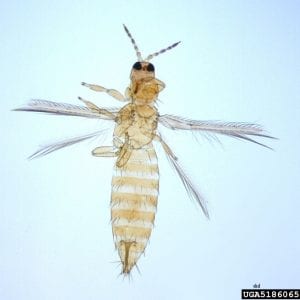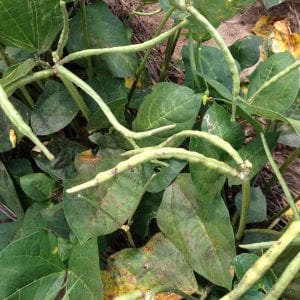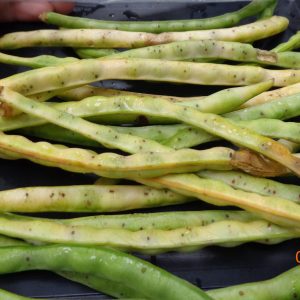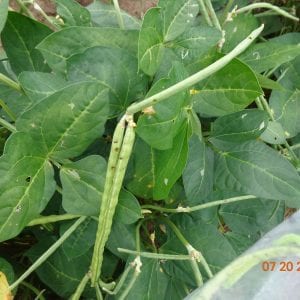Farming

This publication is a quick guide to common insect pests of southern peas (cowpeas) in Alabama starting from early to late-season pests. Always identify insects correctly and decide if they are beneficial or pest before making a treatment decision. Feeding injury symptoms from insects are available in this document to make scouting easier when an insect specimen is not available.
General Pest Management Recommendations
Vegetable growers and gardeners should contact Extension to develop an integrated pest management (IPM) strategy suitable for their farms or gardens after accurate pest identification. Use appropriate production methods with timely planting and harvest to reduce plant stress (IPM Level 1). Pest exclusion fabric can be used for deflecting thrips, aphids, flea beetles, and grasshoppers early in the season (IPM Level 2). For organic recommendations, use the Organic Vegetable IPM Slide Chart or the Southeast Vegetable Handbook for chemical recommendations (IPM Level 3). Download the Farming Basics Mobile App for connecting with university research and regional Extension agents. Subscribe to the Alabama IPM Communicator e-newsletter (www.aces.edu/ipmcommunicator) to stay informed about crop production and pest alerts throughout the season!
Vegetable IPM research and educational programs are funded by grants from the Alabama Department of Agriculture and Industries, USDA SARE, OREI, CPPM, and Beginning Farmer and Ranchers Development Programs.
Other Related Articles
Southeastern U.S. Vegetable Production Handbook
https:/www.aces.edu/blog/topics/vegetable-crops/southeastern-us-vegetable-crop-handbook/
Organic Vegetable IPM Slide Chart
https:/www.aces.edu/blog/topics/farming/the-organic-vegetable-ipm-toolkit/
Leafhoppers
Plant Injury
Early-season pest; may cause deformation of leaves due to loss of plant sap
Sampling Method
Occasional pest in the early season; may be mixed with thrips populations living under the leaves. Sample using clear plastic bag as described for thrips to collect a sample. Use a sweep net for sampling in large open fields.
Flea Beetles
Plant Injury
Early-season pest that causes “shot-hole” symptoms on leaves. Beetles eat many small holes on seedling leaves that could be fatal to the small plant.
Sampling Method
Look for numerous small holes on leaves. Adults are difficult to capture as they readily jump off the plants
Aphids
Plant Injury
Feed on underside of leaves; sooty mold fungus creates blackening of foliage
Sampling Method
- Record the number of leaves with wingless or nonmigratory aphids present.
- Watch for ant and lady beetle populations on plants as a sign of infestation.
- Leafhoppers
- Flea Beetles
- Aphids
Leaffooted Bugs & Stink Bugs
Plant Injury
Relatively minor pests on cowpeas but can become damaging in drought years. They feed with piercing sucking mouthparts and may cause poor pod filling in stressful conditions.
Sampling Method
Large masses of immatures of leaffooted bugs may be seen on pods or on the underside of leaves. Adult leaffooted bugs can be seen sitting on the top of leaves with their leaf-like expansion on legs clearly visible.
Mexican Leaf Beetle
Plant Injury
Midseason insect seems to be more prevalent and damaging to beans on organic farms than bean leaf beetles. Leaves are skeletonized by larvae that have many stout spines.
Sampling Method
Look for orange-colored egg masses under leaves. Larvae and adults may be seen feeding together on leaves at peak activity.
- Leaffooted Bugs
- Mexican Leaf Beetle Larva
- Mexican Leaf Beetle Adult
Caterpillars
Plant Injury
Many species of moths such as corn earworms and loopers feed on cowpeas. Caterpillar feeding on leaves causes skeletonization, and pods may have small round holes.
Sampling Method
- Scout weekly and look for caterpillars under leaves.
- Look for small deep round holes on pods and split open to see caterpillars.
Cowpea Curculio
Plant Injury
Major late-season insect pest of cowpeas and other beans; female bites round feeding holes and then lays eggs in the area. Eggs hatch into larvae that enter the pod and remain inside throughout the larval stage. Damage may be worse in drought years.
Sampling Method
- Look for feeding scars (round shallow holes) on pods.
- Scout for black adult curculios in the morning; adults drop to the ground readily when approached.
- Adult curculios remain at the plant base in the hot afternoon. Split open pods to determine larval infestation.
Thrips
Plant Injury
Early-season pest; causes severe deformation of leaves due to excessive removal of plant sap; also transmits plant viruses that may cause stunting of plants.
Sampling Method
- Look for thrips under the leaves. Examine leaves directly for deformation or use a clear sandwich bag and uproot seedling suddenly to collect thrips and leafhoppers.
- Use a sweep net for sampling in large open fields.
- Caterpillar
- Cowpea Curculio
- Cowpea Curculio Larva
- Thrips
Feeding Injury Diagnosis
Early-Season Plant Problems & Probable Causes on Peas & Beans
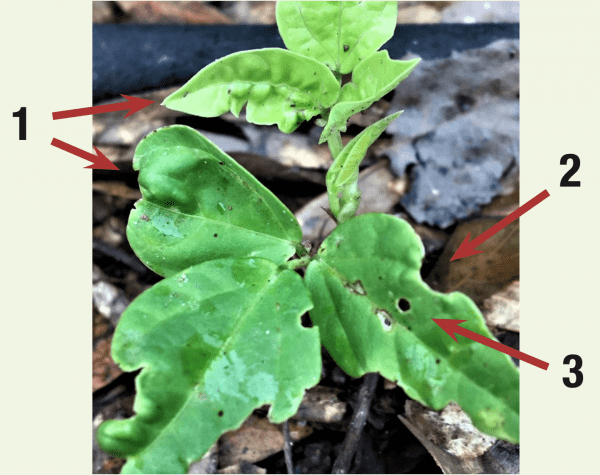
1. Deformed leaves from thrips and leafhoppers
2. Irregular feeding from grasshoppers (major pest in drought)
3. Circular holes or notches from flea beetles (minor pest)
- Sooty Mold from Severe Aphid Outbreak
- Cowpea Curculio Feeding Injury on Pods (Numerous Shallow Holes)
- Deep Round Holes Made by Caterpillars

